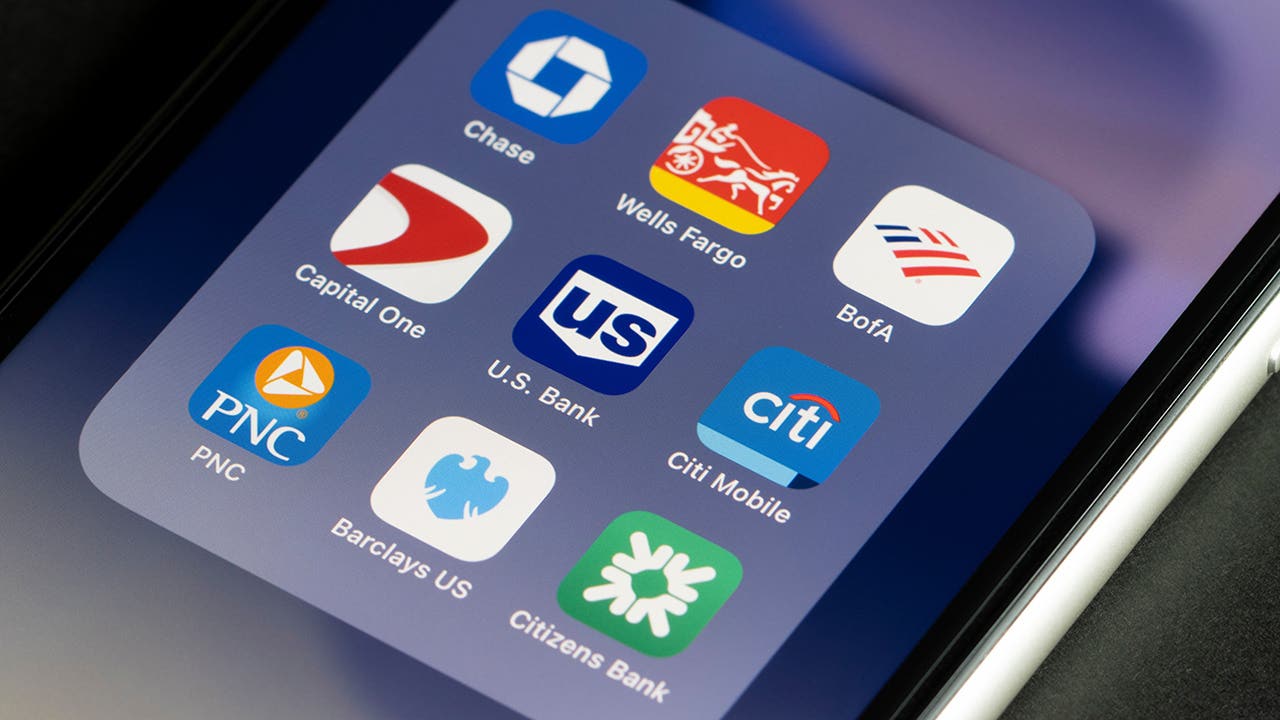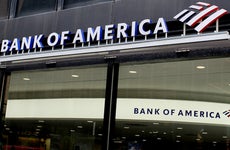These are the most popular banks in each state

The Bankrate promise
At Bankrate we strive to help you make smarter financial decisions. While we adhere to strict , this post may contain references to products from our partners. Here's an explanation for .
Banking with one of the most popular banks can mean having access to more locations and better digital features than at other banks. You might get access to a highly rated app with mobile check depositing and other time-saving features. Or you might appreciate the convenience of visiting a branch as you travel around just when you might need it the most. So it may be valuable to see whether your bank ranks among the most popular.
Here are the top banks in the U.S. by number of branches.
The top 15 largest banks (by number of locations)
| Bank | Branches |
|---|---|
| As of June 30, 2023. Source: Bankrate analysis of FDIC data. |
|
| Chase | 4,875 |
| Wells Fargo | 4,555 |
| Bank of America | 3,811 |
| PNC Bank | 2,441 |
| U.S. Bank | 2,342 |
| Truist Bank | 2,003 |
| Regions Bank | 1,276 |
| TD Bank | 1,173 |
| Citizens Bank | 1,095 |
| Fifth Third Bank | 1,082 |
| Huntington | 1,051 |
| BMO | 1,045 |
| M&T Bank | 1,035 |
| Keybank | 985 |
| Woodforest National Bank | 775 |
In addition to having the most locations in the U.S., Chase is also the largest bank in the U.S. based on consolidated assets.
Mobile apps and online banking have given many consumers less reason to visit a branch, contributing to the decline in the overall number of bank branches in the U.S.
Still, the number of branches in the U.S. has only declined slightly, 4.2 percent, according to Bankrate’s analysis of Federal Deposit Insurance Corp. (FDIC) data comparing the number of branches from June 9, 2022 to June 30, 2023.
Chase had 4,875 branches and main offices while Wells Fargo came in next with 4,555 branches and main offices, as of June 30, 2023 according to the FDIC data.
About 12 percent of the 77,796 bank locations in the U.S. are either Chase or Wells Fargo branches.
In 2021, Wells Fargo had 63 more locations than Chase. And in 2022, Chase had 87 more locations than Wells Fargo.
But as reported by Bankrate in a September 2020 article about the most popular banks in each state, Wells Fargo was on pace to fall behind Chase as the No. 1 operator of bank branches.
Potential reasons behind bank popularity
A bank may be popular for several reasons, including how much it focuses on branches, where it is headquartered or where it decides to expand.
For example, back in 2019, Chase announced plans to open branches in nine states as part of a broad expansion. Here’s how many locations Chase had in the following metropolitan areas, as of June 30, 2023:
- Charlotte, North Carolina (18 locations)
- Raleigh, North Carolina (11 locations)
- Greenville, South Carolina (eight locations)
- Kansas City, Missouri (15 locations)
- Minneapolis (21 locations)
- Nashville, Tennessee (17 locations)
- Pittsburgh (23 locations)
- Providence, Rhode Island (13 locations)
- St. Louis (21 locations in that metro area in Missouri and Illinois)
Chase continued its expansion plans, growing the list of states where it has branches to include the 48 contiguous states and the District of Columbia, after the August 2021 opening of a branch in Billings, Montana.
| Year | Number of states with a Chase branch/office (as of June 30) |
|---|---|
| *As of June 9, 2022. | |
| 2019 | 27 |
| 2020 | 38 |
| 2021 | 43 |
| 2022 | 48* |
| 2023 | 48 |
Another factor that may play into a bank’s popularity is where it’s headquartered or is most concentrated. For instance, Pittsburgh-based PNC Bank has the most branches in only one state — Pennsylvania — with 277. Chase, meanwhile, with 61 branches in the Keystone State has a little more than a fifth of PNC’s presence in Pennsylvania. Still, the figure represents a rapid expansion for Chase, which only had three branches in Pennsylvania in 2019.
Chase didn’t have any locations in Arkansas, Iowa, Montana, North Dakota or South Dakota as of June 30, 2021. It now has six Arkansas locations, five in Iowa, four in Montana, three in North Dakota and three in South Dakota.
Most popular bank by state
No matter where you live, you’ll likely recognize the most popular banks.
Chase and Wells Fargo are well known brands, and they have the most branches in the U.S. They’re also the most popular bank in 30 percent of the 50 states.
Chase now has the most locations in the U.S. and the most branches in seven states. But Wells Fargo has the most branches in eight states and Washington, D.C.
Here are the most popular banks in selected states and Washington, D.C.
| Bank | Bank with the most branches in that state or Washington, D.C. |
|---|---|
| California | Chase |
| Colorado | Wells Fargo |
| Florida | Wells Fargo |
| Illinois | Chase |
| Nevada | Wells Fargo |
| New Jersey | Wells Fargo |
| New York | Chase |
| North Carolina | Truist Bank |
| Pennsylvania | PNC Bank |
| South Carolina | First Citizens Bank |
| Texas | Wells Fargo |
| Virginia | Truist Bank |
| Washington | Chase |
| Washington, D.C. | Wells Fargo |
Noteworthy changes in 2023
Two states have a different popular bank, comparing data from the summer of 2023 to a year earlier.Consolidation and branch closings were among the reasons for changes in state rankings.
- Glacier Bank now has the most locations in Wyoming. Bank of the West, which merged with BMO, previously had the most banks in the state.
- TD has the most locations in New Hampshire. Citizens Bank had the most previously.
Chase vs. Wells Fargo
For the second straight year, Chase leads Wells Fargo with the most bank locations in the U.S.
Branches are slowly disappearing
Some experts predict bank branches are heading for extinction. Indeed, there has been a consistent net loss of locations operated by financial institutions for the last several years. Since there are fewer in-bank transactions, there are also fewer tellers.
Online banks such as Ally Bank have sprung up without any physical locations for customers to transact. Other institutional players have spun out online-only subsidiaries such as Citizens Access, Marcus by Goldman Sachs and Popular Direct from Popular Bank.
Online banking customers deposit checks by snapping a picture, get their cash at ATMs and open new accounts from their phone or computer. And without having to pay to operate physical locations, online banks are often able to offer higher interest rates and lower fees on deposit accounts than their traditional competitors.
“Banking online-only is certainly feasible most of the time for many consumers,” says Greg McBride, CFA, Bankrate chief financial analyst. “But the occasional need for a safe deposit box, a signature guarantee, a cashier’s check or just making a large cash deposit are a lot easier if you have access to a local branch.”
You can have accounts with both online-only and traditional financial institutions and easily transfer funds between the two, McBride says.
“Different consumers value different attributes,” he says. “Aspects like a large branch network, a national or regional presence, broad product lineup, and convenience will carry different levels of importance depending on your individual needs and circumstances.”
Wells Fargo and Chase are certainly trying to create seamless omnichannel experiences by balancing out their large brick-and-mortar presences with growing suites of digital offerings.
Although both financial institutions consolidated their locations in recent years, Wells Fargo is shrinking at a faster pace than its closest competitor.
Bottom line
Bank branches continue to decrease over time. Bank mergers and acquisitions and consolidation of bank branches are some of the main reasons for this. Also, more consumers are able to complete transactions online or on a mobile app these days. And in some cases, people have some accounts with online banks that don’t have branches.
It’s likely that the total number of branches in the U.S. will keep declining.
Andrew Hovet, director of distribution and sales performance at data-analysis provider Curinos says his company is anticipating costs to keep going up through wage pressure and the reduction of overdraft fee and non-sufficient funds fee income.
“CFOs are going to be looking to hit earnings somehow,” Hovet says. “And branch closures (are) always a quick way to get some savings.”
Note: Bankrate’s analysis is based on locations listed under the main entity for a bank. Adrian Garcia contributed to an earlier version of this story.
Related Articles



